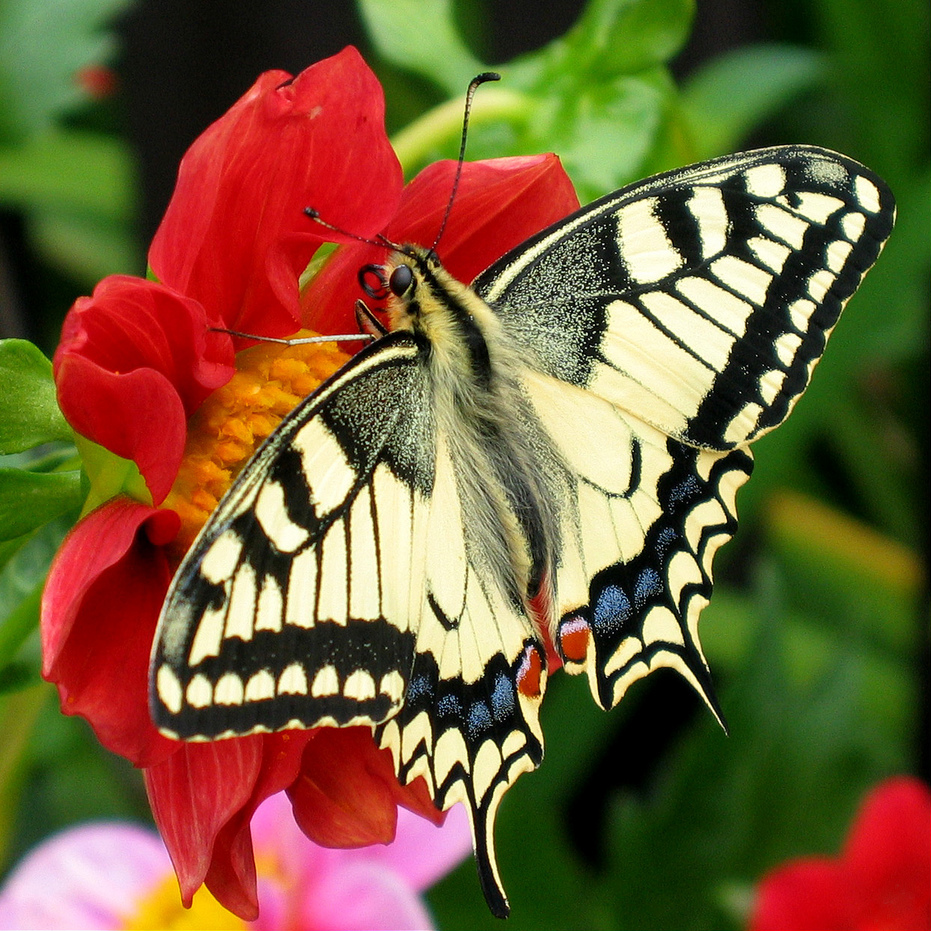
Evolution is a truly wondrous thing. It has given us eyes and lots of grey matter [which we still don’t use very well]. It has given us the beautiful tiger and shimmering hues and soaring songs of our birds. It has given us the towering Sequoias, creepy insects, gorgeous ocean-bound creatures and invisible bacteria and viruses. Yet for all its wondrous adaptations one evolutionary invention still seems mysteriously supernatural — metamorphosis.
So, how and why did it evolve? A compelling new theory on the origins of insect metamorphosis by James W. Truman and Lynn M. Riddiford is excerpted below (from a detailed article in Scientific American).
The theory posits that a beneficial mutation around 300 million years ago led to the emergence of metamorphosis in insects:
By combining evidence from the fossil record with studies on insect anatomy and development, biologists have established a plausible narrative about the origin of insect metamorphosis, which they continue to revise as new information surfaces. The earliest insects in Earth’s history did not metamorphose; they hatched from eggs, essentially as miniature adults. Between 280 million and 300 million years ago, however, some insects began to mature a little differently—they hatched in forms that neither looked nor behaved like their adult versions. This shift proved remarkably beneficial: young and old insects were no longer competing for the same resources. Metamorphosis was so successful that, today, as many as 65 percent of all animal species on the planet are metamorphosing insects.
And, there are essentially three types of metamorphosis:
Wingless ametabolous insects, such as silverfish and bristletails, undergo little or no metamorphosis. When they hatch from eggs, they already look like adults, albeit tiny ones, and simply grow larger over time through a series of molts in which they shed their exoskeletons. Hemimetaboly, or incomplete metamorphosis, describes insects such as cockroaches, grasshoppers and dragonflies that hatch as nymphs—miniature versions of their adult forms that gradually develop wings and functional genitals as they molt and grow. Holometaboly, or complete metamorphosis, refers to insects such as beetles, flies, butterflies, moths and bees, which hatch as wormlike larvae that eventually enter a quiescent pupal stage before emerging as adults that look nothing like the larvae.
And, it’s backed by a concrete survival and reproductive advantage:
[T]he enormous numbers of metamorphosing insects on the planet speak for its success as a reproductive strategy. The primary advantage of complete metamorphosis is eliminating competition between the young and old. Larval insects and adult insects occupy very different ecological niches. Whereas caterpillars are busy gorging themselves on leaves, completely disinterested in reproduction, butterflies are flitting from flower to flower in search of nectar and mates. Because larvas and adults do not compete with one another for space or resources, more of each can coexist relative to species in which the young and old live in the same places and eat the same things.
Read the entire article here.
Image: Old World Swallowtail (Papilio machaon). Courtesy: fesoj – Otakárek fenyklový [Papilio machaon]. CC BY 2.0, https://commons.wikimedia.org/w/index.php?curid=7263187

 History will probably show that humans are the likely cause for the mass disappearance and death of honey bees around the world.
History will probably show that humans are the likely cause for the mass disappearance and death of honey bees around the world.